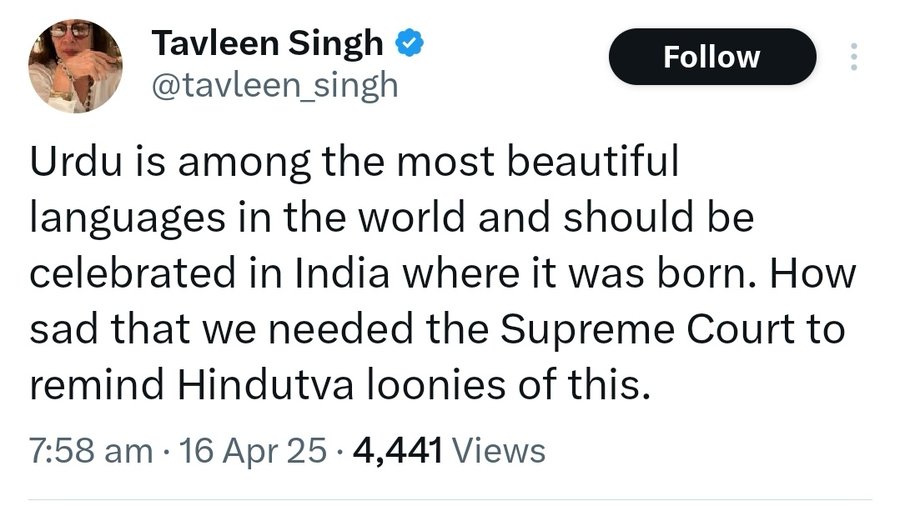Recently, Urdu is featured in online discussions with a vengeance. Some of the debates focus on its usage, while others focus on the language’s origins and its place in Indian society. The LeLi section of social media celebrates Urdu as a symbol of cultural richness. However, others question its historical roots and contemporary implications.

Let’s understand a little about the history, development, and script of this distinctly Islamic language. And let’s also understand the socio-political dynamics surrounding its public usage.
Origins of Urdu: A Linguistic Confluence
Some state that Urdu emerged in the Indian subcontinent during the 11th-12th centuries. However, despite the Islamic conquest over some regions of Bharat, Arbi/Arabic or Farsi/Persian was used for all official documents during those times. Thus, scholars believe that Urdu came to exist as a language only during the 1700s.
The Islamic rule, though painful, brought with it small cultural and linguistic interactions. Hence, the Persian-speaking invaders needed to talk to the local Hindi speaking slaves. Therefore, most Urdu developed from regional dialects such as Brij Bhasha, Mewati, Khari Boli, and Haryanvi – which are offshoots of Prakrit. But, the language incorporated vocabulary from Arabic, Persian, Turkish, and other languages. Why? To create a unique mix of Desi with the Videsi to birth Urdu whose main characterization is its hybrid nature.
The term “Urdu” itself derived from the word “ordu” – meaning portable encampment ruled by Khan among the Mongol and Turks of Central Asia!
Thereby, reflecting its association with Islamic military camps where diverse linguistic groups interacted. In fact, these military camps themselves gave a name to Prakrit – Hindi – the language of the people of Hind, as they called Sindhu Saraswati civilization dwellers.While, scholars would argue that Urdu’s development was more organic, it was language born of necessity between the conquer and the conquered!
Urdu – Script and Identity
One of the distinguishing features of Urdu is its script. It is written in the Nastaliq style, a calligraphic form of the Perso-Arabic script. This script was adopted during the 13th century and is closely associated with Persian cultural influence. The choice of script has significant implications for cultural identity, as it aligns Urdu with Islamic and Persianate traditions.
Written from right to left, like its perso-Arabic mother, Urdu only adopts Sanskrit grammar structure in its basic sentence and word construction.
Hence, the script is Videsi and despite the Desi grammar structure the feel of the language remains foreign. The flow of the language along with large sections of Arabic, Persian, or Turkish words closely tie Urdu to the Middle East rather than India.
A Language Born Of Forced Imposition
The recognition in a court’s decision as a “Ganga-Jamuni Tehzeeb” ambassador was met with mixed reactions. Proponents view it as a recognition of India’s linguistic diversity. Meanwhile critics argue that it adds fuel to the raging fires of Language Wars in the many southern states.

In the name of opposing “Hindi Imposition,” as Tamil and Kannada protestors have been erasing Hindi from milestones, public signboards, and even airport information displays. With permission to use Urdu in signboards, the courts may have handed a devious weapon in the hands of these Language Warriors! Soon, southern parties will replace Hindi with Urdu on sign boards using this particular verdict as precedent.
Using Urdu instead of Hindi will win certain political parties Muslim votes as well pro-Language gatekeeping votes – all in the name of defeating “Hindi Imposition of BJP”!!
Therefore, the debate extends beyond signage. Urdu’s association with Islamic theology and its use in Islamic education leads to its identity as a direct link to a symbol of religious identity. Hence, the language is no longer a neutral linguistic medium. Critics argue that the prominence of Urdu in such contexts may inadvertently promote Islamic cultural values at the expense of indigenous traditions. Additionally, Urdu contributes to a sense of cultural alienation between Muslims and Bharat – due to its foreign script.
Hence, the language became a sign to Muslim communities of their “otherness” rather than a symbol of organic pride of regional languages!
Food For Thought

Urdu’s origin story is a testament to its legacy of Islamic conquest of regions of India. To some it may reflect centuries of interaction between diverse linguistic and cultural groups. Its roots in the Indian subcontinent remain tied with its script and associations with Persian and Islamic traditions.
Hindi unites not just Hindus – its Sanskrit roots and regional connections – makes it a language that resonates with the diversity of Bharat!
Hindi was born in india for indians – but Urdu was not!
Urdu also unites, however, it unites only Muslims in their identity as followers of Islam.
While both languages are recognized as official languages of Bharat, only one of them is truly secular in nature. Hindi adopts many words from all regional dialects, foreign influences, and its mother Sanakrit. Thus, to promote unity in Bharat- Hindi is a better ambassador than Urdu which is only read by less than 5% Indians.
In terms of script, number of speakers, religious overtones, and origin – Urdu is found to be the illegitimate Videsi child of Bharat Mata. Its forced imposition in the times of Islamic rules, leaves a dirty feeling in the hearts of a Bharat’s majority. So the question remains – does the permission to use by the courts – justify the public display of a language that is a symbol of Islamic imposition? Only time will tell!


